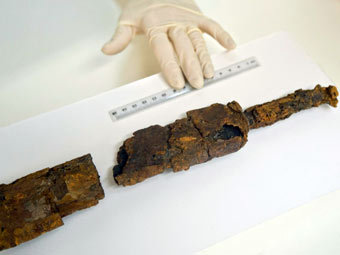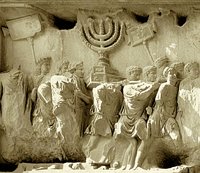August 9, 2011

|
This suggests the finds were debris from a monumental episode in the city's history when rebels hid from Roman soldiers crushing a Jewish revolt, AP reports.
The tunnel was built two millennia ago underneath one of Roman-era Jerusalem's main streets, which today largely lies under an Arab neighborhood in the city's eastern sector.
Following a four-year excavation, the tunnel is part of a growing network of subterranean passages under the politically combustible modern city.
The tunnel was intended to drain rainwater, but is also thought to have been used as a hiding place for the rebels during the time of the Second Temple in Jerusalem.
That temple was destroyed, along with most of the city, by Roman legionnaires quelling the Jewish uprising in 70 A.D.
On Monday, archaeologists from the Israel Antiquities Authority unveiled a sword found in the tunnel late last month, measuring 24 inches in length and with its leather sheath intact.
The archaeologists said the sword likely belonged to a member of the Roman garrison around the time of the revolt, AP reports.
Eli Shukron, the Israel Antiquities Authority archaeologist in charge of the dig, said, "We found many things that we assume are linked to the rebels who hid out here.”
He said they found “oil lamps, cooking pots, objects that people used and took with them, perhaps, as a souvenir in the hope that they would be going back.”
The archaeologists also found a bronze key from the same era, coins minted by rebels with the slogan "Freedom of Zion.”
 |
The new tunnel, lit by fluorescent bulbs, has been cleared for much of its length but has not yet been opened to the public, reports AP.
The tunnel is part of the expanding City of David excavation in Silwan, which lies above the oldest section of Jerusalem.
The excavation – which began in 2007 -- is named for the biblical monarch thought to have ruled from the site. It is funded by a group affiliated with the Jewish settlement movement
The dig has attracted criticism from Palestinian residents who have charged that the work is disruptive and politically motivated.
When the tunnel opens to the public sometime in the coming months, underground passages totaling about a mile (1.6 kilometers) in length will be accessible beneath Jerusalem.
The tunnels have become one of the city's biggest tourist draws and the number of visitors has risen in recent years to more than a million in 2010, AP reports.
